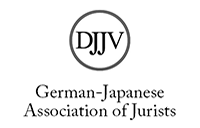Tradierte Moderne? Zur Entwicklung, Begrifflichkeit und Bedeutung von Schlichtung und Mediation in Japan
Abstract
Japan’s tradition of consensus-oriented settlement of disputes with the aid of a neutral intermediary is exceptionally long, though its institutionalised forms and functions have changed over time. This article examines the history of conciliation and mediation and the breaks with this tradition that have (also) influenced its specific functionality in modern Japan. The authors sort the confusingly disparate terminology of conciliation and mediation, especially as it appears in Western literature. They then analyse the role that conciliation and mediation play in the present Japanese practice of conflict settlement.
The authors come to the conclusion that the question implied by the headline of the article – whether conciliation and mediation are traditionally rooted in Japanese law – is to be answered by a “yes and no”. The form of “conciliation” (naisai) that was solidly established in Japan over a long time during the Edo period probably does have psychological after-effects in present society in terms of an open-mindedness towards non adversarial conflict settlement. Still, this mandatory form of conciliation – which was not part of a constitutional legal order but was rather its functional substitute – cannot be put on the same level as the modern conciliation that is based on voluntariness and is integrated into the Japanese legal system as one of many procedural alternatives. Modern conciliation does not line up in a direct institutional tradition with the naisai system.
On the other hand, the legal institution of conciliation has been used several times since the beginning of modernisation of the Japanese legal system: initially at the end of the 19 th century as a transitional solution until the necessary institutions for jurisdiction were established, then during the 1920s and 1930s in the areas of tenancy and leasing law as well as labour law in order to handle social frictions, and from the end of the 1940s for family and civil disputes in accordance with the rule of law.
Besides these judicial or court-related conciliation procedures, a vast number of ADR institutions – partly of administrative, partly of private nature, and of varying kind and quality – have developed in post-war Japan due to a lack of efficient and affordable access to court. Despite the differences in detail, this situation is evocative of the Edo period insofar as, once more, private institutions instead of the reluctant state are providing for dispute settlement mechanisms. Although this uncontrolled growth with its sometimes considerable structural deficiencies was increasingly incompatible with the rule of law, the Japanese legislator and jurisprudence have long neglected this development that took place outside the law. The impetus to deal with the subject came instead in the 1990s from the United States, where ADR procedures have played an increasingly important role for decades in the settlement of social conflicts. Also, the experiences in the U.S. essentially influenced the embodiment of the ADR law of 2004. Insofar, one cannot speak of a continuation of Japanese tradition.






